Abu Simbel, Aswan Governorate, Egypt
Abu Simbel is two massive rock temples located in southern Egypt on the western bank of Lake Nasser. 831
Abu Simbel: Abu Simbel, Aswan Governorate 1211501
Date Picture Taken: February, 2024
My Aswan stay owner set up a bus transfer to Abu Simbel for me. I had to travel with nine other people to Abu Simbel. It was not a guided tour; it was just a transfer service to Abu Simbel, and the driver waited for two hours and took us back to Aswan.
The road to Abu Simbel from Aswan only opens from 5:00 AM to 5:00 PM, and most of the tour or transfer starts at 4:30 AM and comes back at 1:00 PM.
I had to meet the driver at 4:20 AM near my stay to get on the van to Abu Simbel.
This is the path that leads to the temples.

Panoramic view



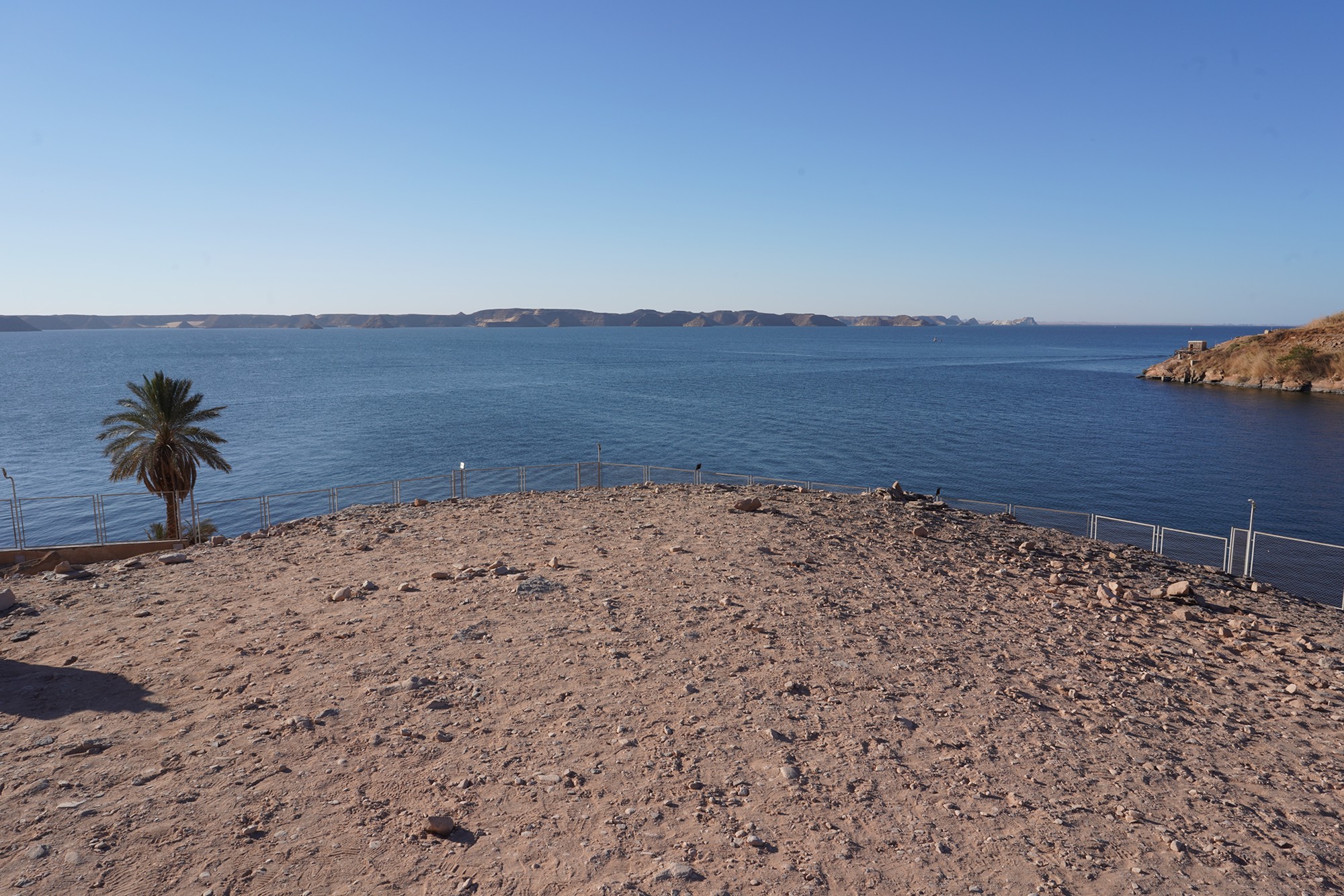





The temples were originally carved out of the mountainside during the reign of Pharaoh Ramesses II in the 13th century BCE. The complex is known for its impressive size, architectural significance, and historical importance.


There are two temples in Abu Simbel. This is the Great Temple of Ramesses II (The Great Temple).
This is the larger of the two temples and is dedicated to the pharaoh Ramesses II.
The facade of the temple is adorned with four colossal seated statues of Ramesses II, each reaching a height of about 20 meters (65 feet).


The entrance leads to a series of halls and chambers, including the Hypostyle Hall, which features intricately decorated columns and walls with reliefs depicting military victories and religious scenes.


Looked back at the entrance
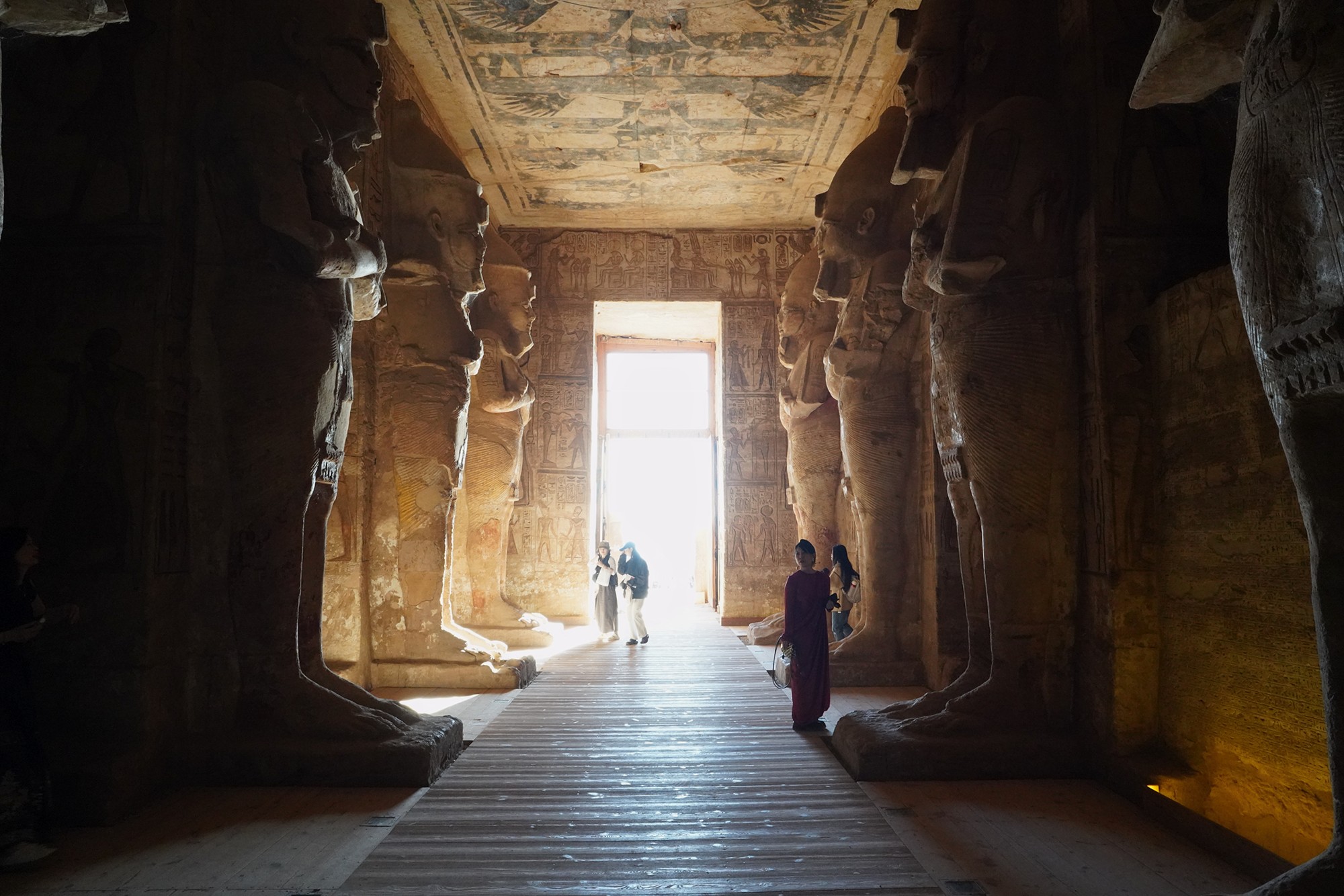




Looked back at the entrance








A side room


Out from the room

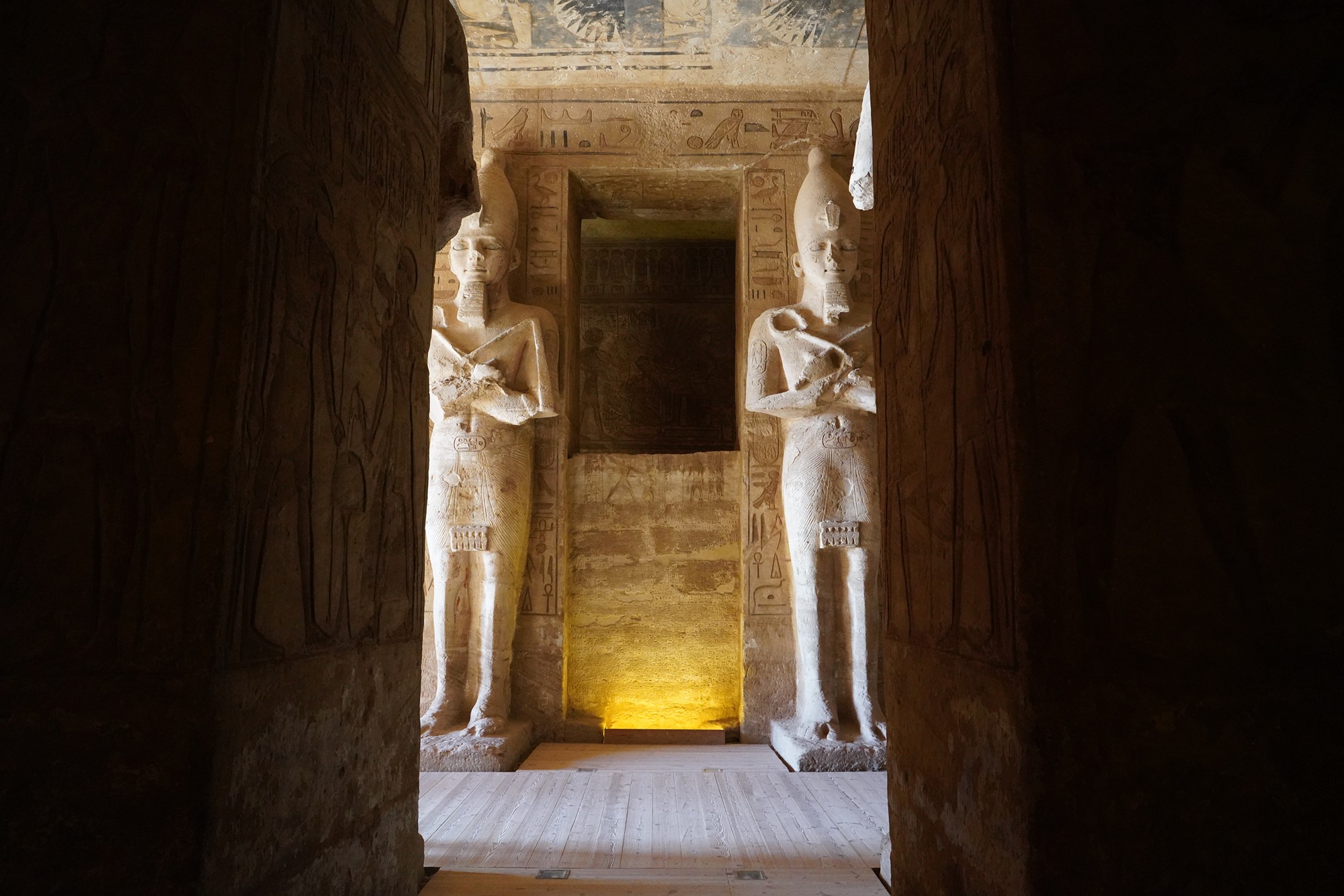


Looked back at the inner area
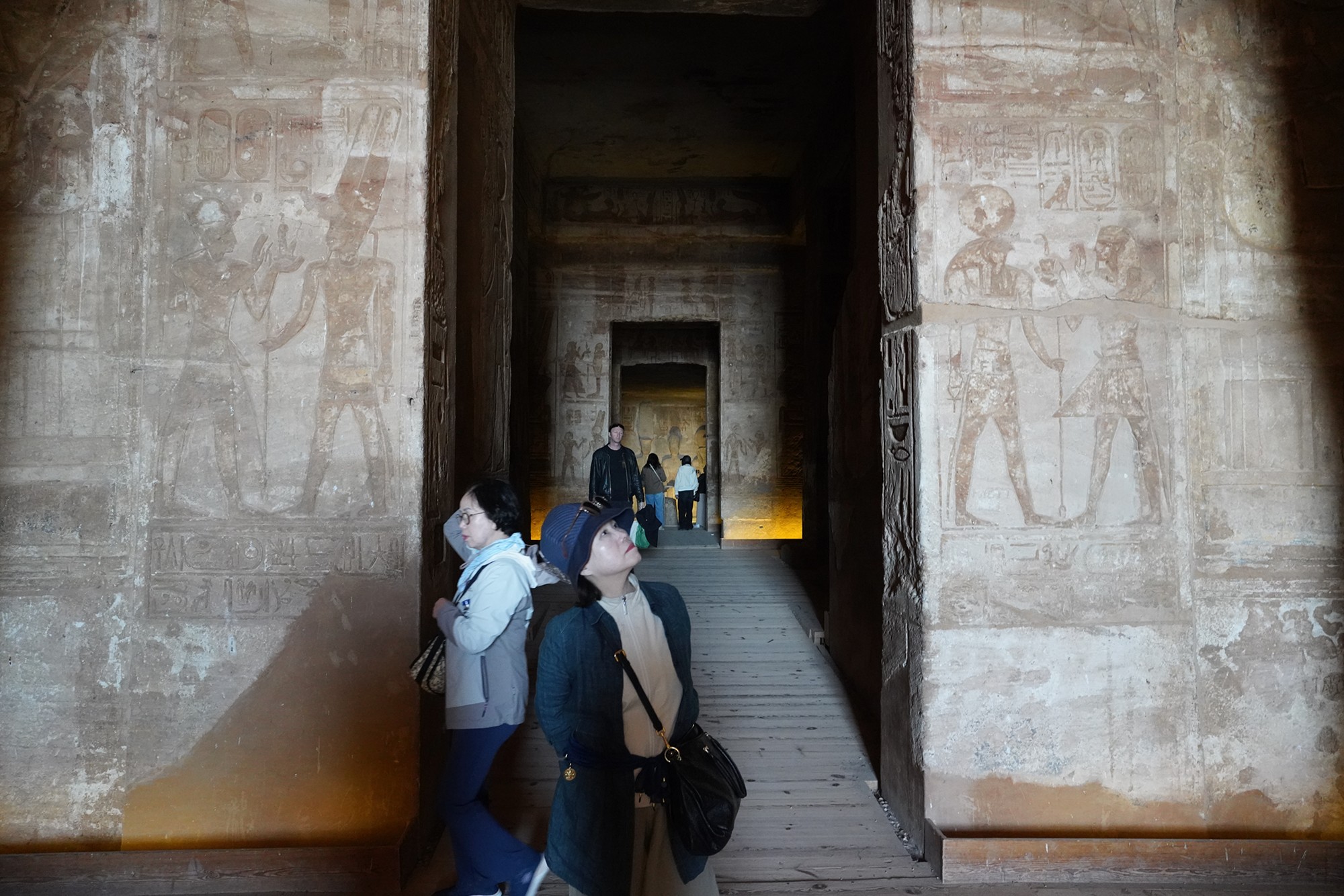



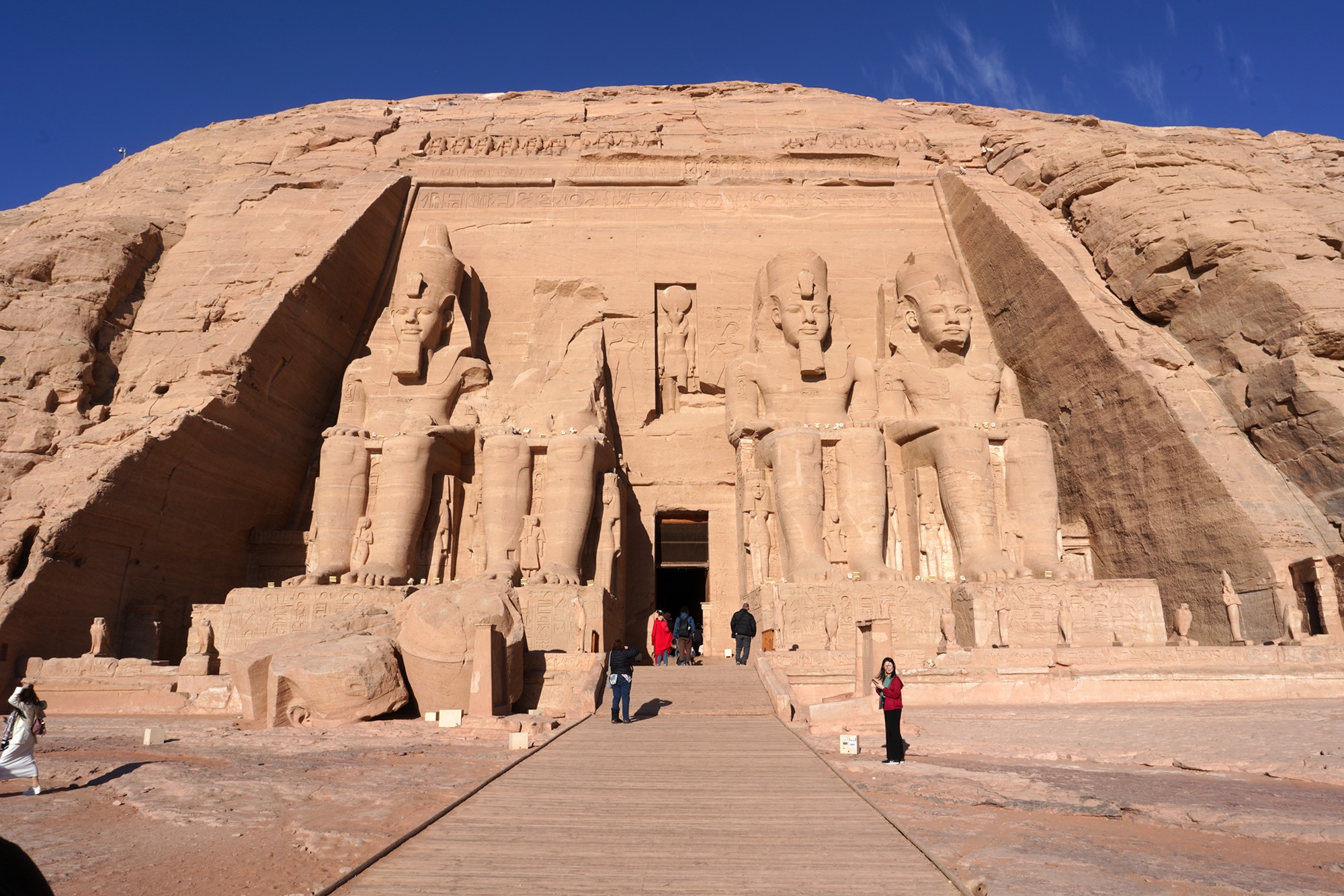
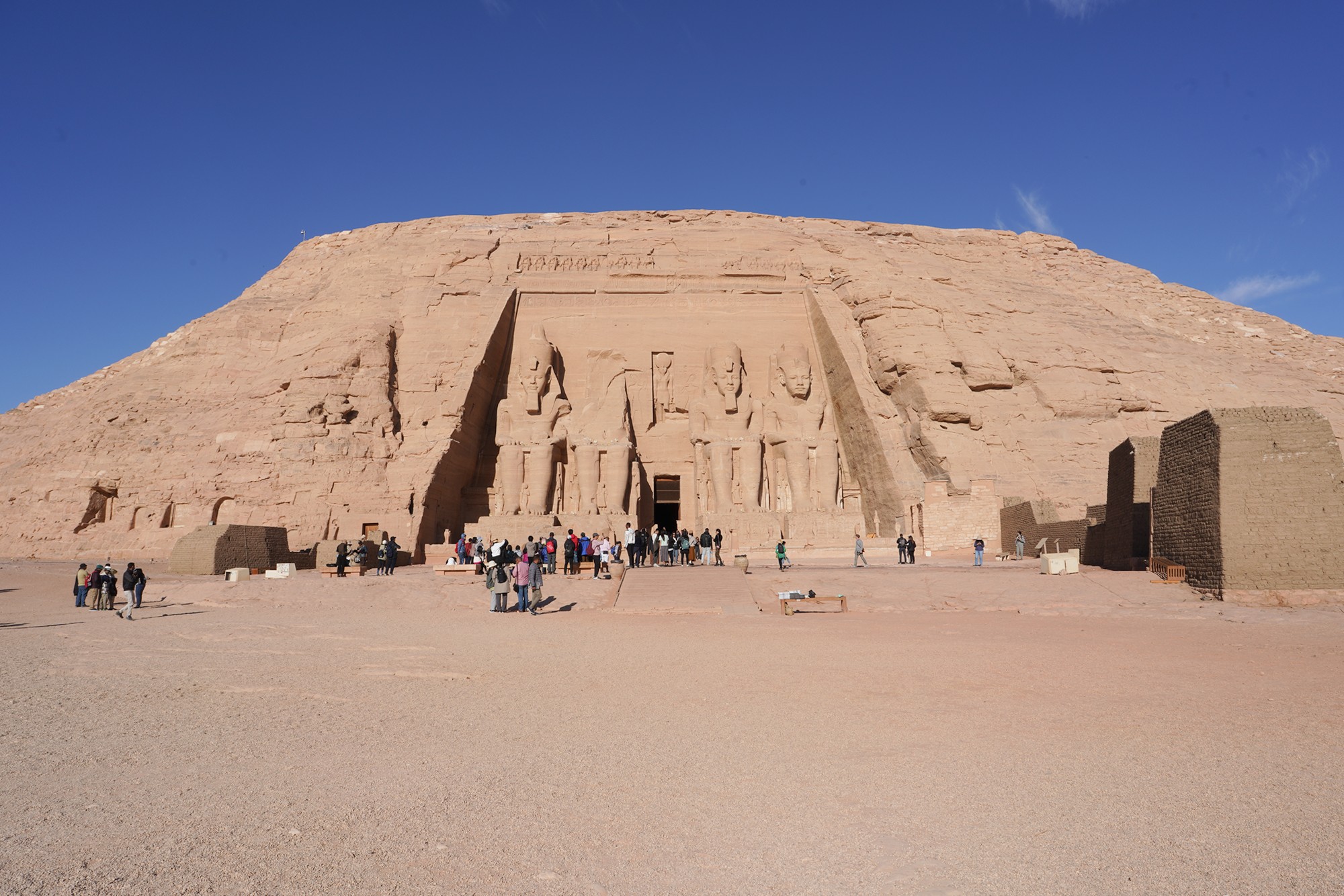



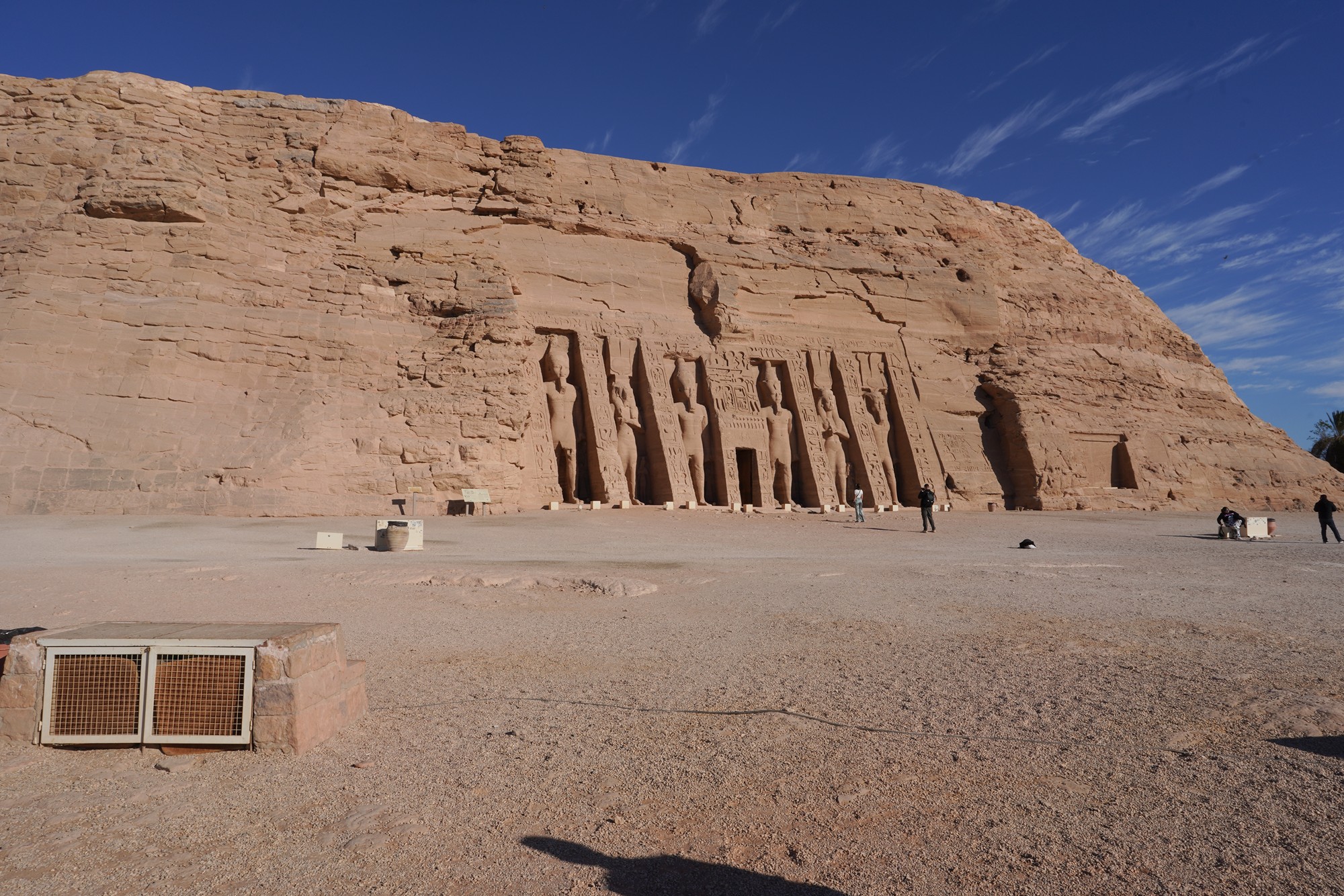
Temple of Hathor and Nefertari
Often referred to as the Small Temple, it is dedicated to the goddess Hathor and Queen Nefertari, the chief consort of Ramesses II.

The facade of this temple features six standing statues—four of Ramesses II and two of Nefertari.

The interior of the temple includes a central hall with columns and chambers decorated with scenes of the royal couple making offerings to the gods.








Turned back and looked at the entrance

One last look









One of the most remarkable aspects of Abu Simbel is its relocation in the 1960s. As a result of the construction of the Aswan High Dam and the creation of Lake Nasser, the temples faced the threat of submersion. In a UNESCO-led effort, the entire complex was dismantled and relocated to higher ground between 1964 and 1968. This massive engineering feat ensured the preservation of Abu Simbel and its continued accessibility to tourists.


Walked back to the van that will take me back to Aswan

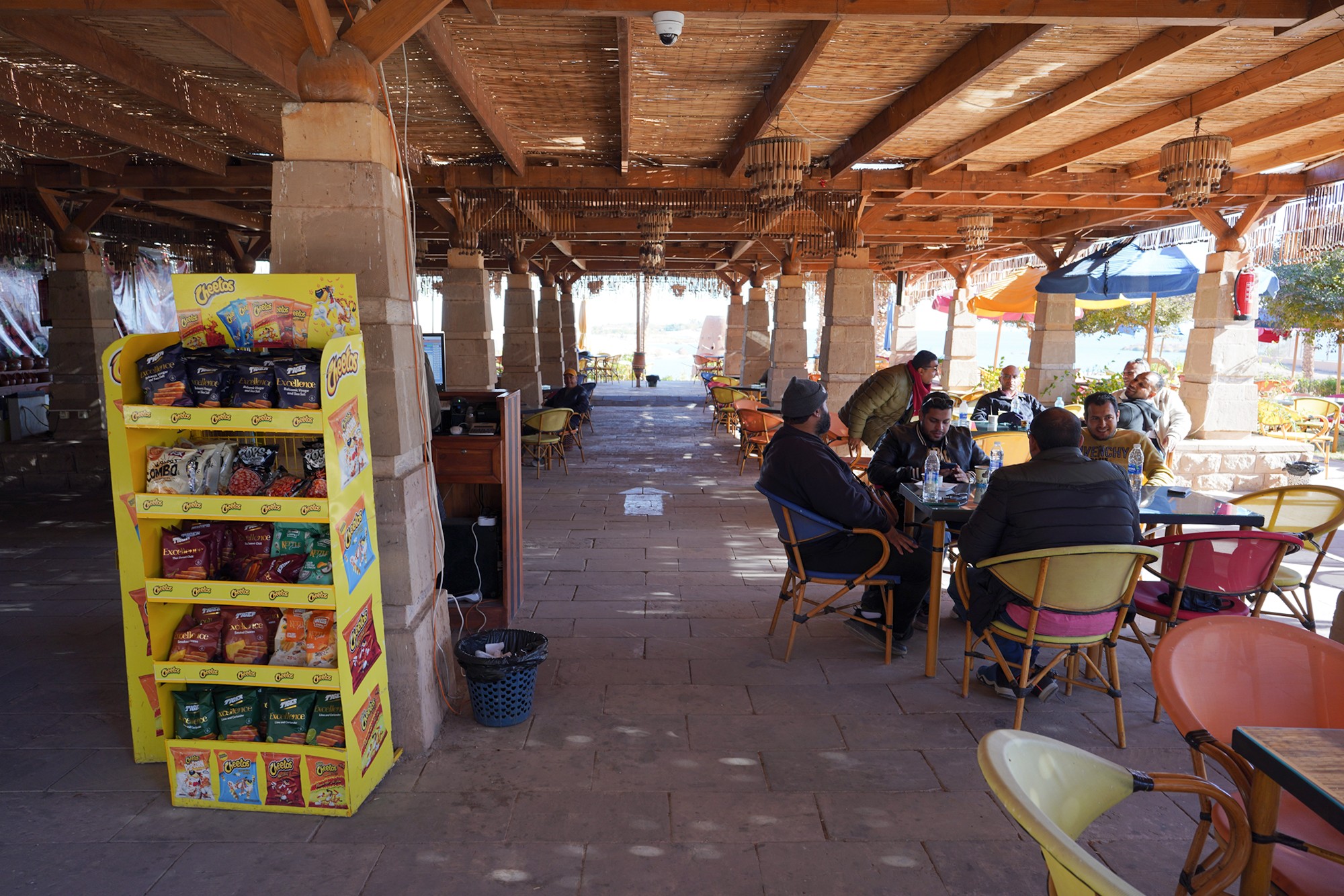
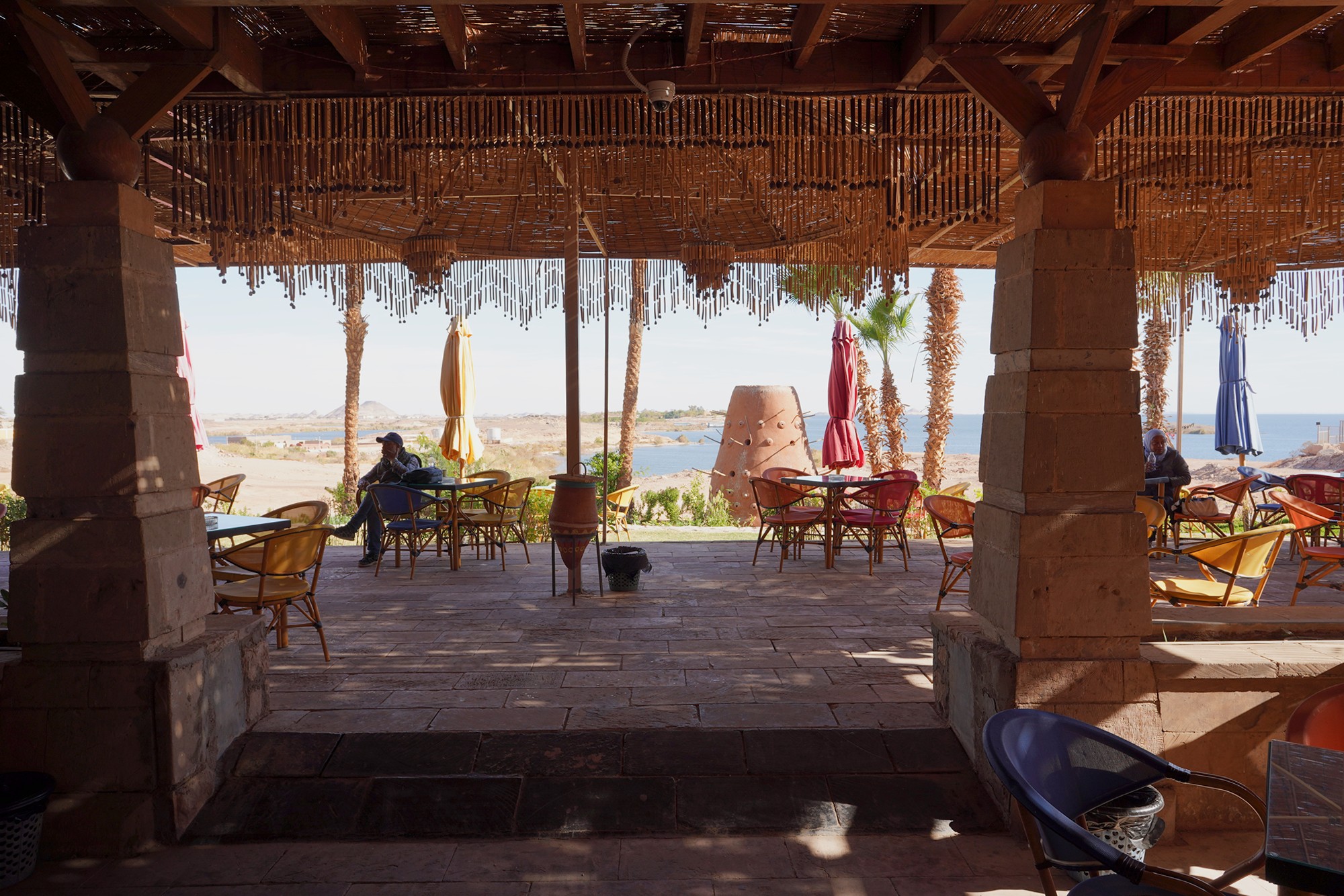
Another dinner at my stay

